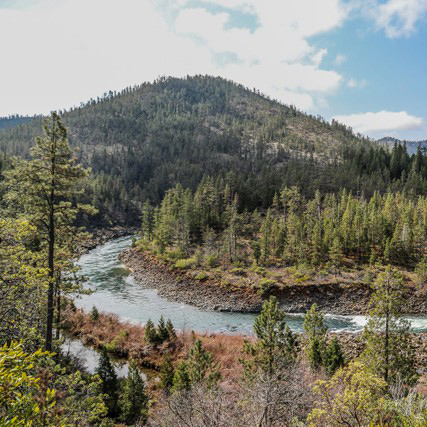Kalmiopsis Wilderness
The United States Congress designated the Kalmiopsis Wilderness in 1964, and it now totals180,095 acres. This Wilderness includes the headwater basin of the Chetco and North Fork Smith Rivers, and a portion of the Illinois River canyon. This is a harsh, rugged area with a beautifully unique character that resonates with anyone who ventures into its interior! Elevations range from 500 to 5,098 feet (Pearsoll Peak). The area is characterized by deep, rough canyons, sharp rock ridges, and clear rushing mountain streams and rivers.
Diversity of topography and geology provide excellent habitats for a wide variety of botanical species. Much of this diversity results from plant species adapting to life in harsh soils that are derived from peridotite and serpentinite rocks. Both are rich in heavy metals, such as magnesium, iron, chromium and nickel, which in high amounts, can be toxic to most plants. The diversity of plant habitat is the result of a combination of geologic forces (uplift, folding and faulting), erosional and depositional forces (glaciation, weather, climate and the action of rivers), and periodic fires. The wilderness’ namesake plant, an endemic shrub known as Kalmiopsis leachiana, was discovered in 1930 in the Gold Basin area by the botanist Lilla Leech. The plant is a relic of the pre-ice age, and the oldest member of the Health (Ericaceae) Family. For those with a more serious interest in botany, there is a plant list for the Kalmiopsis Wilderness available at the Wild Rivers Ranger District and Gold Beach Ranger District.
